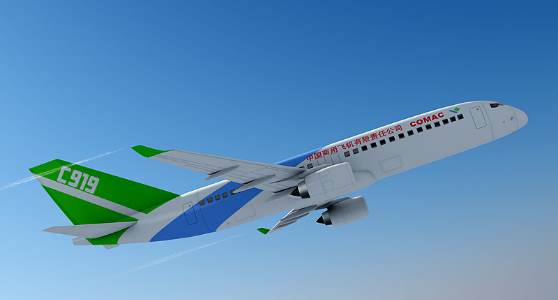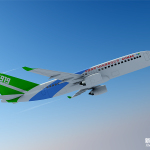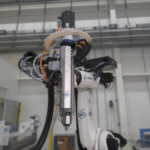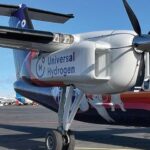China’s first homegrown large airliner rolled off the production line in Shanghai, to great fanfare on live national television Monday and a mixed reaction from potential passengers. The C919 represents a Chinese effort to challenge the dominance of Airbus and Boeing in the global commercial aviation market, CNN reported.
The new plane — a twin-engine, narrow-body aircraft seating up to 174 people — is similar in size to the Airbus 320 and Boeing 737 series of jets, long the workhorses for airlines around the world. With a flying range of up to 5,555 kilometers, it is designed to compete head-to-head with its Airbus and Boeing rivals and could be deployed on popular business and leisure routes from China such as Shanghai to Singapore and Beijing to Bangkok.
Launched in 2008, the C919 project marks China’s return to the business of making large passenger jetliners, after a failed attempt in the 1980s. Although the C919′s maiden flight is at least a year away, its manufacturer, state-owned Commercial Aircraft Corp. of China (Comac), has made no secret of its future plans to make another, wide-body airliner.
The government also wants to use the C919 as a springboard to develop a nationwide aviation industry, boasting the involvement of more than 200 companies, 36 universities and hundreds of thousands of personnel in the plane’s development. State media are touting the “advanced technologies” used throughout the plane, from new avionics to an airframe partially made of light composite materials, similar to the one on Boeing’s 787 Dreamliner.
However, some aviation enthusiasts in China are not so sure about the state media’s claim that the C919 is a product of “complete Chinese intellectual property”. Compiling published information, CNN was able to verify a widely shared graphic that indicates that many key components of the C919 are made overseas — including the engines (by US-French joint venture CFM International), power system and landing gear (both by US-based Honeywell).
The C919 will only partly satisfy China’s hunger for new passenger jets as its aviation market continues its explosive growth. The country will need more than 6,300 new planes over the next two decades, according to a recent Boeing forecast. During President Xi Jinping’s recent state visit to the United States, China signed a deal with Boeing to purchase 300 airliners worth US$38 billion at list prices.
When German Chancellor Angela Merkel visited Beijing last week, China also announced that it would buy 130 Airbus jets valued at US$17 billion. Comac expects to sell 2,000 aircraft in the coming 20 years. So far, the C919 has received 517 orders, mostly from state-owned Chinese carriers and domestic aircraft leasing companies.
The lack of certification from the US Federal Aviation Administration is seen as a major hindrance for international sales. While many Chinese netizens express pride in the indigenous jetliner, others sound skeptical about the safety of an entirely made-in-China plane.
Some internet users have made a point of saying they will feel comfortable flying the C919 when it is used as China’s “Air Force One”. For now and in the foreseeable future, though, it’s a safe bet that Xi will continue to fly in a specially configured Boeing 747 presidential jet when he travels abroad.













